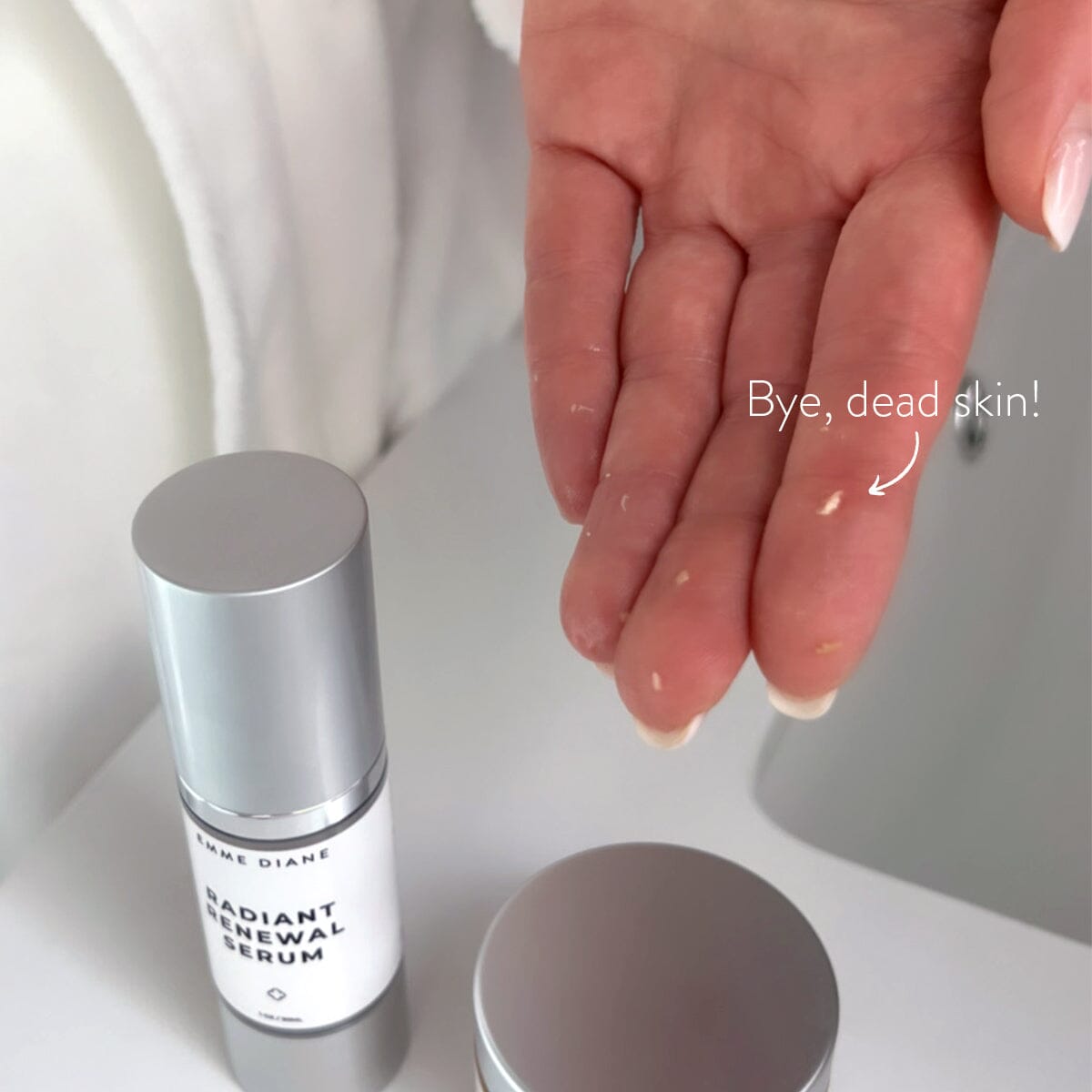Do 60% of Skincare Products Really Absorb into the Bloodstream?
by Emily Linehan on October 13, 2022
So many skincare myths have circulated the internet, but one of the most shocking was a claim that 60% of the ingredients we put on our skin are absorbed into the bloodstream. Considering how many ingredients are in not only our skincare products but the makeup and hair care products we use every day, that’s a pretty scary statistic.
While many beauty brands decided to run with this fear-mongering idea to sell more products with “clean” or “natural” ingredients, this theory couldn’t be further from the truth… just like the idea that “clean beauty” itself is better for you. (You can learn more about the common misconceptions with “natural beauty” products here.)
Since the primary function of the skin is to serve as a protective barrier, it is designed to keep substances out, so if 60% of everything that touches your skin gets in, it's clearly not doing a very good job. You might be thinking, if the skin is designed to keep things out, then do my skincare products even work? Yes, they do! The difference is that most skincare products are designed to penetrate the epidermis (the outermost layer of the skin), not be absorbed into the bloodstream.

Skincare Absorption vs Penetration
Although the terms are often used interchangeably, absorption and penetration mean two entirely different things. When it comes to skincare products, formulations are designed to penetrate the skin. This means that the active ingredients are able to work into the deeper layers of the skin (past the first few layers of dead stratum corneum) but stop there. When ingredients are absorbed into the bloodstream however, that implies that they have made it past the dermis (a deeper layer in the skin) and have entered the bloodstream.
So, can skincare be absorbed into the bloodstream?
Most skincare formulas are designed to work on the top layers of the skin, or penetrate to slightly deeper layers, but that doesn’t mean absorption into the bloodstream isn’t possible, however, it’s pretty unlikely. It’s actually pretty difficult for a product that is applied topically to find its way into the bloodstream. To start, the substance would need to have a small enough molecular structure to make it through the deepest layer of the skin. While most active ingredients, like ascorbic acid, are small enough to penetrate deeper into the skin (past the dead cells and into the living cells), but they are not small enough to go into the dermis, which houses the blood vessels.
In addition to size, the solubility of the substance matters as well. Since the skin contains both hydrophilic (water-loving) and hydrophobic (oil-loving) molecules, the substance would need to have the right balance of both to absorb into the bloodstream. Among other things, it would also need to survive the body's metabolic functions, like the excretory system that is responsible for filtering and excreting wastes.
Something else to consider is that our skin is thicker in different areas of the body, therefore it’s not as permeable in all locations. For example, our forearm will be less permeable than areas where the skin is thinner, such as the armpit. As we discussed earlier, it’s essential to keep in mind that permeability doesn’t mean a substance enters the bloodstream. Instead, it means that it was able to penetrate the epidermis. So, just because an area on the body has a thinner layer of skin, that doesn’t automatically mean a product applied there will be absorbed into the bloodstream! For more information on the different areas of the body and their permeability, check out this chart that PhD Chemist and beauty blogger, Michelle Wong of LabMuffin, created!
Due to the unique structure of the skin, it is actually incredibly difficult to formulate substances that can be absorbed from the skin, into the bloodstream (transdermal delivery). That is a big reason why there are much fewer options for transdermal medications (like nicotine patches, medicated creams, etc.) compared to other medications like those that are digested (pills, cough syrup, etc.), or delivered via injection or IV drips.
Since most products are not designed to penetrate past the epidermis, it’s extremely difficult for any of your skincare products, let alone 60% of them, to be absorbed into the bloodstream.
xoxo, Emme


